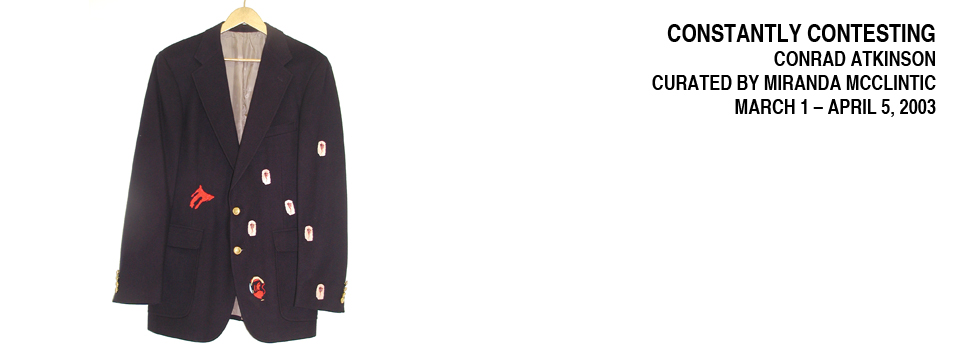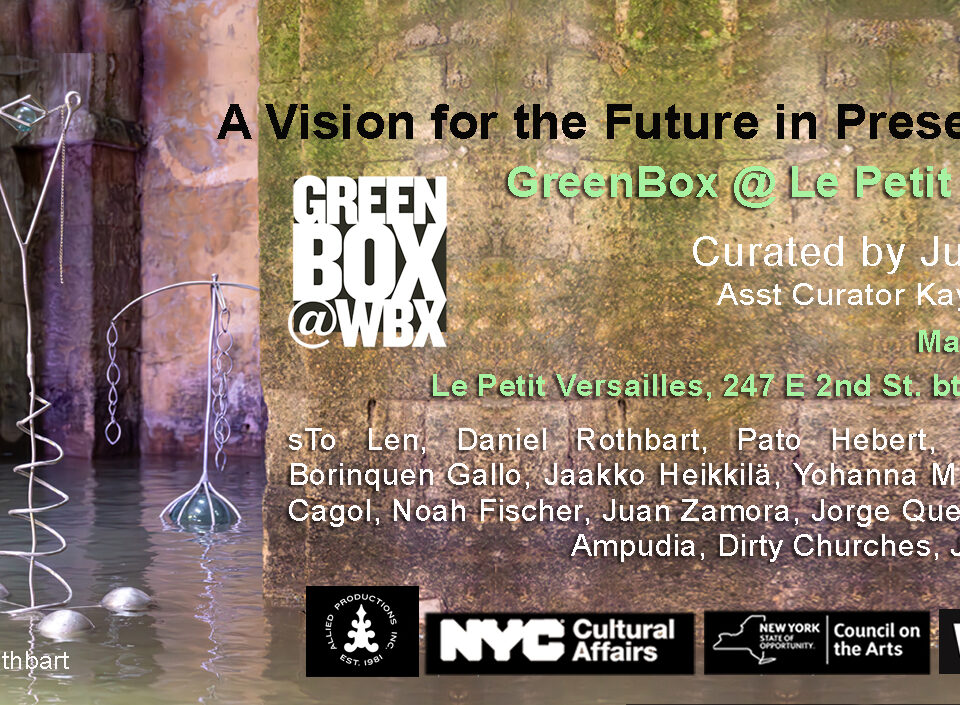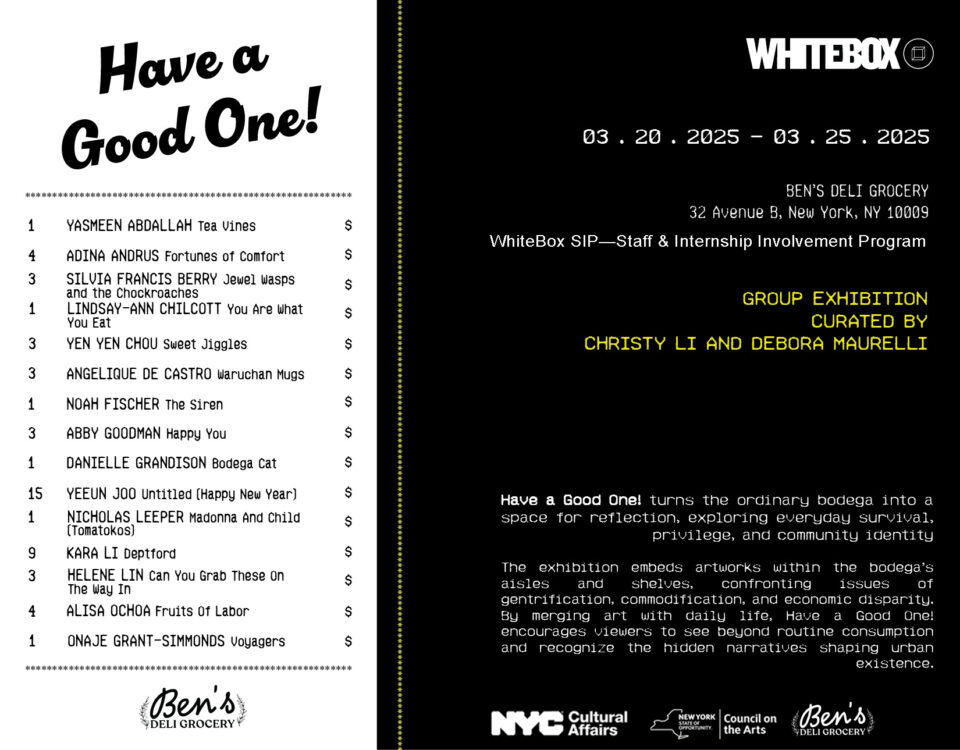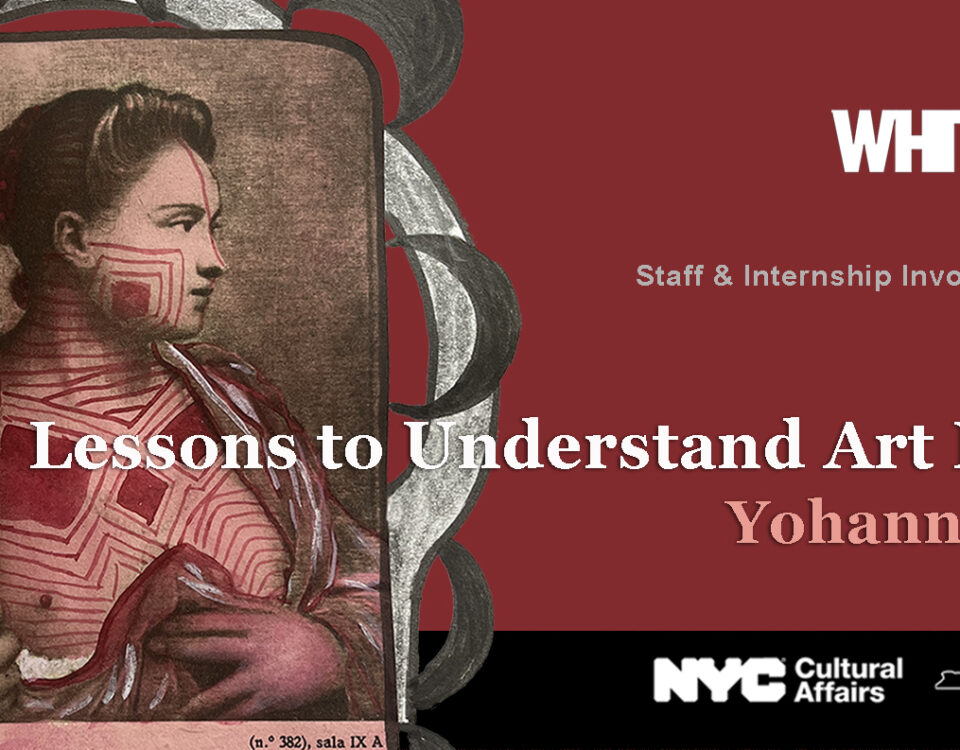JEFF CHIPLIS: EXCITED INNER GASES
January 9, 2003William Anastasi: Blind
March 8, 2003CONSTANTLY CONTESTING CONRAD ATKINSON CURATED BY MIRANDA MCCLINTIC MARCH 1 – APRIL 5, 2003
Art and politics mix in recent work by internationally renowned British artist Conrad Atkinson, presented here in the context of two decades of paintings, drawings, ceramics, textiles, and prints. Atkinson creates visually compelling interpretations of 9/11, violence, AIDS, West Nile virus, immigration, art world politics, control and manipulation of information, third world labor, ENRON, the proliferation of landmines, and beauty. Through his work he transforms his strongly held beliefs into art with humor and with formal training from The Royal Academy Schools London.
Many works in this exhibition come directly from London s Courtauld Institute of Art Gallery where Atkinson was the first contemporary artist to respond to the collection and install his own art among the masterpieces that inspired them. He depicted wounds and scars from Renaissance crucifixions that created “a disconcerting dialogue between present and past,” according to the Times of London, which cited the show as one of the three best of the year nationwide.
As well as newspaper works from the 1980s, clothing embroidered with viruses and epigrams, there will be two series of paintings about the events of 9/11. Atkinson will also create a new wall installation based on wounds found in the Metropolitan Museum of Art’s collection. Ceramic sculptures of landmines will be prominently displayed in the windows of White Box and of Ronald Feldman Fine Arts, SoHo, in honor of the fifth anniversary of the Landmine Treaty that went into effect March 1, 1998. He was the Official Artist of the U.S. Landmines Campaign in 1997-98. Personalizing the political, Atkinson extends the conceptual premises of his art into action.
Included in the exhibition are newspapers, basins, landmines, wounds, and men’s suits that reflect the complex meanings and multiple associations of the information and images conveyed through mass communications media and through art. Re-presenting emblems, headlines, advertisements, popular music, stereotypes, and cultural icons, Atkinson’s pieces demonstrate that our understanding of the world is determined by conflicting information differing in source, format and content.
Born in Cumbria in the north of England in 1940, from a family of coal miners, Conrad Atkinson earned degrees from Carlisle College of Art, Liverpool College of Art and the Royal Academy Schools. In 2002, he became the first practicing artist to be appointed Distinguished Visiting Professor to the Courtauld Institute of Art, while on sabbatical from the University of California at Davis. Recently, his films from 1970, “Industrial Relations Bill” and “X Film” have been acquired for Tate Britain’s permanent collection. An acknowledged influence on younger generations of artists in Britain and the United States, he has exhibited internationally since the 1970’s. Conrad Atkinson’s works are in the permanent collections at the Tate, the Victoria and Albert Museum, The British Museum, the Australian National Gallery, the Pushkin Museum, Moscow, and the Museum of Modern Art, New York.
Artist Statement
Landmines are not only functional weapons of destruction that cost three dollars to make and three hundred to deactivate, but will continue to kill children at random for the next thousand years at the current cleanup rate. They are also objects of political, economic and cultural significance, serving as metaphors for a variety of contemporary issues and ideologies. Landmines represent the globalization of culture as much as the Golden Arches of McDonald s. We love our beautiful bombs: they defend our way of life. By bringing these symbolic values into focus, I have tried to offer a different and more productive perspective on our propensity for creatively destroying each other. From Goya to Guernica, from Roger Fenton to Don McCullin, artists have sought new, more effective ways to picture war and horror. But the image of children with bandaged limbs and missing legs – like all images of human tragedy – produces only compassion fatigue when repeated several hundred times. Rather than seeking to represent this horror literally, I have focused on its source. We are imbricated with these weapons, ideologically economically and imaginatively. In this sense, imagination has itself become a source of death and destruction. Like Bob Dylan wrote on his guitar, this weapon kills.
SPECIAL EVENTS AT WHITE BOX
LANDMINE RAFFLE
Throughout the Conrad Atkinson exhibition White Box is offering raffle tickets at $50 each giving collectors and White Box members and visitors the opportunity to win an original Conrad Atkinson work of art valued at $3,000. Tickets to participate in the raffle of original Conrad Atkinson land mines are available at White Box, either in person or by telephone on 212-714-2347 or via the White Box website www.whiteboxny.org. Four landmine sculptures will be raffled. All tax deductable raffle proceeds will benefit Adopt-A-Minefield and White Box. Winning tickets will be drawn on Friday, March 28th at 8 pm at White Box. Land mine sculptures courtesy of the artist and Ronald Feldman Fine Arts.
TWO CONVERSATIONS WITH CONRAD ATKINSON
Two American artists, Alfredo Jaar and Tim Rollins will, on two separate evenings will dicuss art, politics and social change with Conrad Atkinson. Both Rollins and Jaar’s work was influenced by an Atkinson exhibition titled Material at Ronald Feldman Fine Arts in 1979 which suggested the name Group Material adopted by the political art collective established in New York that same year by Tim Rollins, Julie Ault, Mundy Ellis, and Douglas Ashford.
Saturday, March 1, 2003 at 5:00 pm
In conversation with Alfredo Jaar, introduced by Miranda McClintic
Friday, March 28, 2003 at 7:00 pm
In conversation with Tim Rollins, introduced by Eleanor Heartney
Conrad Atkinson shows courtesy Ronald Feldman Fine Art, New York. This exhibition has been made possible through generous support of the British Council and Ronald Feldman Fine Arts.




